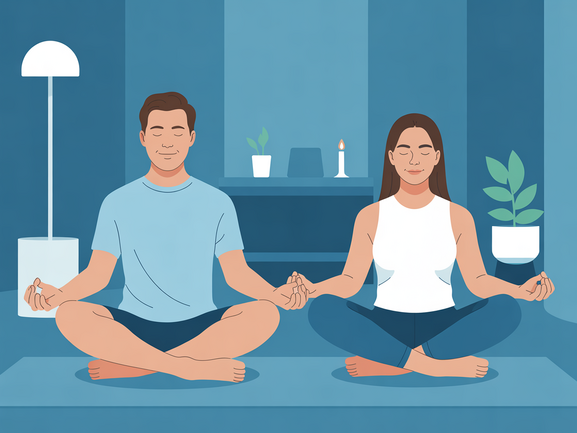10 Meditation Tips That Will Transform Your Daily Life
In our fast-paced world, finding moments of peace can feel impossible. However, meditation tips and mindfulness practices offer a pathway to inner calm that’s accessible to everyone. Whether you’re dealing with work stress, relationship challenges, or simply seeking greater self-awareness, these proven techniques can transform your daily experience.
Research shows that just 10 minutes of daily meditation can reduce anxiety by up to 60% and improve focus significantly. Moreover, incorporating mindfulness into your routine doesn’t require hours of sitting in silence—it’s about finding practical ways to stay present throughout your day.
Why Meditation and Mindfulness Matter More Than Ever
Before diving into specific techniques, let’s understand why these practices are crucial for modern living. Studies from Harvard Medical School demonstrate that meditation techniques literally rewire our brains, strengthening areas associated with emotional regulation and reducing activity in the amygdala, our brain’s stress center.
Furthermore, mindful living helps us break free from autopilot mode, allowing us to respond thoughtfully rather than react impulsively to life’s challenges. This shift can dramatically improve our relationships, work performance, and overall well-being.
10 Transformative Meditation Tips for Beginners and Beyond
1. Start with the 3-Minute Rule
Many people abandon meditation because they think it requires lengthy sessions. Instead, begin with just three minutes daily. This manageable timeframe builds consistency without overwhelming your schedule. As you develop the habit, you’ll naturally want to extend your practice.
2. Use Anchor Breathing
Focus on your breath as an anchor point. When your mind wanders (and it will), gently return attention to your breathing. This simple technique forms the foundation of most beginner meditation practices and remains effective even for experienced practitioners.
3. Practice the 5-4-3-2-1 Grounding Technique
For instant mindfulness, identify: 5 things you can see, 4 things you can touch, 3 things you can hear, 2 things you can smell, and 1 thing you can taste. This technique quickly brings you into the present moment, especially during stressful situations.
4. Embrace Walking Meditation
Meditation doesn’t require sitting still. Walking meditation combines movement with mindfulness, making it perfect for busy individuals. Focus on each step, the feeling of your feet touching the ground, and your surroundings. This practice seamlessly integrates into daily activities like commuting or lunch breaks.
5. Create a Consistent Schedule
Choose the same time daily for your practice. Whether it’s immediately after waking up or before bed, consistency strengthens your meditation habit. Many practitioners find morning sessions set a positive tone for the entire day.
6. Use Body Scan Meditation
Start at the top of your head and slowly move your attention down through your body, noticing any sensations without judgment. This technique promotes deep relaxation and helps you become more aware of physical tension you might be carrying.
7. Practice Mindful Eating
Transform meals into mindfulness opportunities. Eat slowly, savoring each bite’s texture, flavor, and aroma. This practice not only enhances your relationship with food but also serves as regular mindfulness training throughout the day.
8. Implement the STOP Technique
When feeling overwhelmed, use STOP: Stop what you’re doing, Take a breath, Observe your thoughts and feelings, Proceed with awareness. This acronym provides a quick reset button for stressful moments.
9. Use Guided Meditations
Especially helpful for beginners, guided meditations provide structure and direction. Apps like Vitalizen offer professionally crafted sessions that adapt to your experience level and preferences.
10. Be Patient with Your Mind
Remember that a wandering mind isn’t a failure—it’s normal. The practice lies in noticing when your attention drifts and gently returning to your focus point. This process of returning actually strengthens your mindfulness muscle over time.
Scientific Benefits of Regular Meditation Practice
Research consistently validates the profound benefits of daily mindfulness. A landmark study published in the Journal of Health Psychology found that regular meditation practice leads to:
- Reduced cortisol levels by up to 25%
- Improved immune function and reduced inflammation
- Enhanced emotional regulation and decreased anxiety
- Better sleep quality and reduced insomnia
- Increased gray matter in areas associated with learning and memory
- Lower blood pressure and improved cardiovascular health
Additionally, neuroimaging studies show that even short-term meditation training can increase cortical thickness in areas responsible for attention and sensory processing. These changes often become apparent within just eight weeks of consistent practice.
Incorporating Mindfulness into Your Daily Routine
The beauty of simple meditation tips for busy people lies in their flexibility. You don’t need to completely restructure your life to benefit from these practices. Instead, consider these integration strategies:
Morning Integration
Start your day with five minutes of breathing meditation before checking your phone. This sets a mindful tone and helps you approach the day with greater clarity.
Work Day Practices
Use transition moments—walking to meetings, waiting for elevators, or before important calls—as opportunities for brief mindfulness exercises. These micro-practices accumulate into significant benefits.
Evening Wind-Down
End your day with a body scan or gratitude meditation. This practice helps process the day’s events and promotes better sleep quality.

